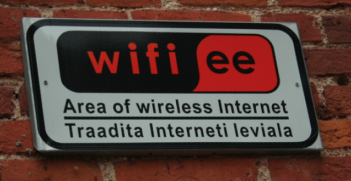The Science of a New Space Race

Landmark scientific projects such as the Human Genome Project can encourage international cooperation and bring nations together. However when security interests and defence research align with the prestige of a landmark project, international competition is all but assured.
Synthetic biology is a scientific discipline less than a decade old. Its potential defence and security applications may create a new space race, this time between the USA and China.
The larger concern is not that this race may happen, but that if it does it will politicise and militarise an ethically sensitive area of the life sciences at a time when this frontier technology is critical to maintaining a sustainable world.
The Human Genome Project (HGP) cost about US$300 million (A$394 million), involved 20 international institutions and sequenced the human genome in just over a decade. The draft sequence was published in February 2001 and has driven economic, health and social benefits the world over for the last 15 years. To a very large extent this research project underpins the modern life sciences and is the equivalent of landing on the moon.
Why does it matter? Because researchers have begun referring to this project as HGP-read. Having a USB stick that’s locked so you can only read the material saved on it is useful to a point, but imagine the productivity benefits that come from being able to edit and save material on that same USB. That’s where HGP-write comes in.
Creating a genome
Writing genomes is already a reality, albeit on a much smaller scale. There is currently a consortium of twelve international institutions writing the genome for a strain of yeast called Saccharomyces cerevisiae, Sc2.0 for short. Welcome to the field of synthetic biology.
Microsoft has been researching biological computation for some time now and synthetic biology forms a core component of what they do. Their projects include designing molecular circuits made of DNA and programming synthetic biology devices. This obviously raises an important question that intelligence agencies all over the world might be asking one day: how do you hack a biological computer? The technologies associated with synthetic biology have the potential to transform societies around the globe. But such a truism doesn’t actually capture the impacts synthetic biology might have.
The first large commercial applications of synthetic biology are probably going to be in health and agriculture. Some likely applications will be rice genomes written to withstand hotter climates and yeast genomes tailored for wine and beer. There are already cell-based immunotherapies in development that leverage the science of synthetic biology.
Blue-sky thinking
Now it’s time to use your imagination, synthetic biology can write genomes, it therefore has the capacity to create completely novel organisms. What of bacteria that can transform pesticides into fertiliser? What of microorganisms that can break down plastic, glass, and metal? It really is blue-sky thinking when it comes to the potential of this research discipline.
With biological computers a near-horizon technology their use by militaries around the world is a near certainty. The line between what is and isn’t biological warfare is going to become blurred and the militaristic use of biological technologies may well become an important component in the future of war.
This may seem like science fiction fantasy, but Sc2.0 is happening now and HGP-write is just around the corner. Or is it?
HGP-read was 50 per cent funded (US$150m) by the National Institutes of Health in the USA from 1990 to 2005. The project very fortunately coincided with the end of the Cold War and a monumental global economic boom. The kind of appropriation required for HGP-write is in the multi-billion dollar range; it’ll make the funding required for HGP-read seem somewhat insignificant. With the US election in full swing and the EU reeling from Brexit, I don’t believe there are any easy public sources for these funds in the West. Nor do I believe this will change anytime soon.
Chinese funding?
Chinese institutions are key collaborators on the Sc2.0 project and the knowledge base and technical expertise required to launch a project like HGP-write is there. More importantly, the funding required to launch and sustain HGP-write is there too. But one has to ask to what ends would spin-off technologies be used for if HGP-write were hosted by China? Military and security uses would have to be considered potential applications.
HGP-write is at this stage imagined as an international collaboration on a massive scale but China may not need to collaborate internationally at all. If the capacity to conduct synthetic biology in-country was vastly scaled up China could go it alone.
A 10 to 15 year project costing multiple billions of dollars resulting in an achievement of unparalleled prestige? It sounds somewhat similar to landing on the moon. It may be a long-shot prediction, but with the size of the budget required for HGP-write and the potential applications of the science being so security sensitive, there is a small chance that Synthetic Biology might kick off a new space race.
Such a proposition does not come without a large level of excitement and uncertainty. We are, as a species, very much on the edge of a whole set of scientific unknowns that we have never had to philosophically contend with before. The ability to write the genomes of living organisms will be a unique power with which scientists and policy makers shall have to contend with. But which scientists and whose policy makers? What of the ethical implications of HGP-write and how will these concerns be treated in a hypothetical space race?
Opportunity for collaboration
In my opinion, there is a now a small window of opportunity to ensure that this project is collaboratively conducted across national borders. More importantly than that, if the project is conducted as an international collaboration the technological and scientific breakthroughs will be available to all.
Between the EU, the US, China and the rest of the world, this project could be truly transformative on scientific, economic and diplomatic levels. Science has often been the cause of great international cooperation and great international competition. At a time of global economic difficulty, there simply isn’t the capacity to engage in another space race.
Thom Dixon is a councillor with the AIIA NSW and a Young Leader with the Pacific Forum CSIS’s Young Leadership Program. He works as the project officer (research) within the Office of the Deputy Vice-Chancellor (Research) at Macquarie University, Sydney. Macquarie University is a member of the Sc2.0 Project.
This article is published under a Creative Commons Licence and may be republished with attribution.





